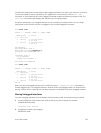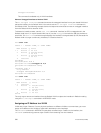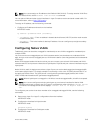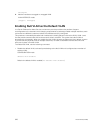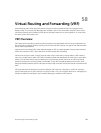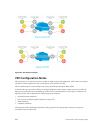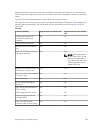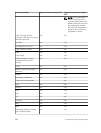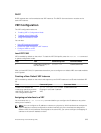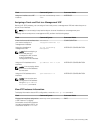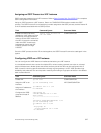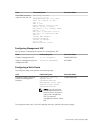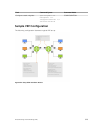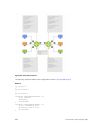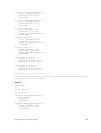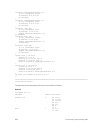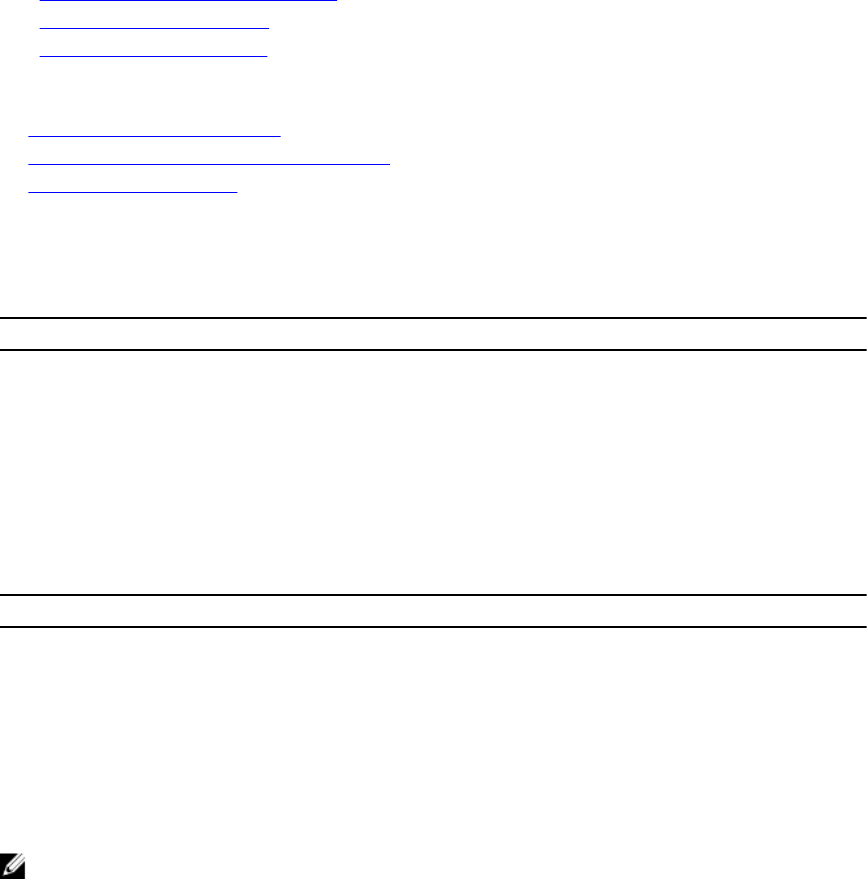
DHCP
DHCP requests are not forwarded across VRF instances. The DHCP client and server must be on the
same VRF instance.
VRF Configuration
The VRF configuration tasks are:
1. Enabling VRF in Configuration Mode
2. Creating a Non-Default VRF
3. Assign an Interface to a VRF
You can also:
• View VRF Instance Information
• Connect an OSPF Process to a VRF Instance
• Configure VRRP on a VRF
Load VRF CAM
VRF is enabled by default on the switch. To load the VRF CAM profile, enter the feature vrf command
in global configuration mode.
Step Task Command Syntax Command Mode
1 Load CAM memory for
the VRF feature.
feature vrf
CONFIGURATION
After you load VRF CAM, CLI parameters that allow you to configure non-default VRFs are made available
on the system.
Creating a Non-Default VRF Instance
VRF is enabled by default on the switch and supports up to 64 VRF instances: 1 to 63 and the default VRF
(0).
Task Command Syntax Command Mode
Create a non-default VRF
instance by specifying a name
and VRF ID number, and enter
VRF configuration mode.
ip vrf vrf-name vrf-id VRF
ID range: 1 to 63 and 0 (default
VRF)
CONFIGURATION
Assigning an Interface to a VRF
You must enter the ip vrf forwarding command before you configure the IP address or any other
setting on an interface.
NOTE: You can configure an IP address or subnet on a physical or VLAN interface that overlaps the
same IP address or subnet configured on another interface only if the interfaces are assigned to
different VRFs. If two interfaces are assigned to the same VRF, you cannot configure overlapping IP
subnets or the same IP address on them.
Virtual Routing and Forwarding (VRF)
925



